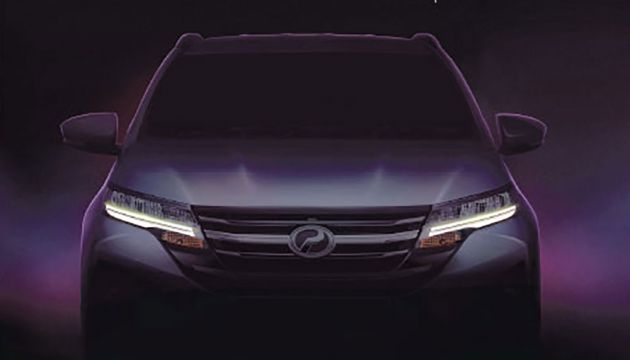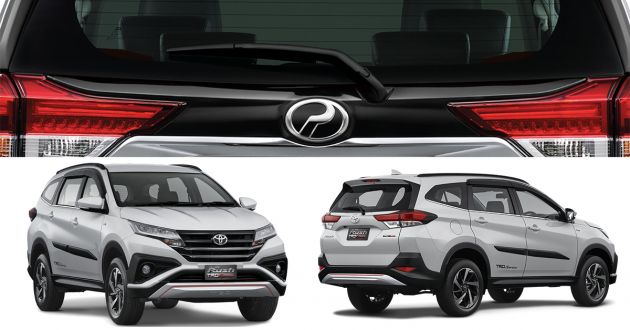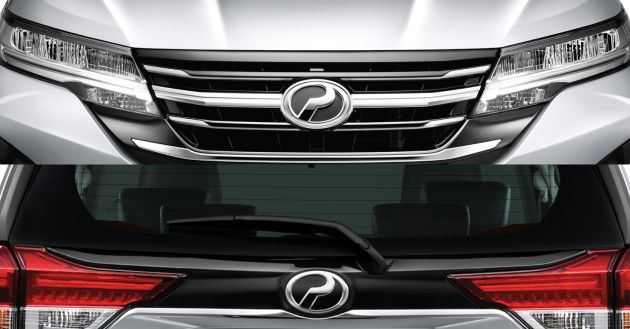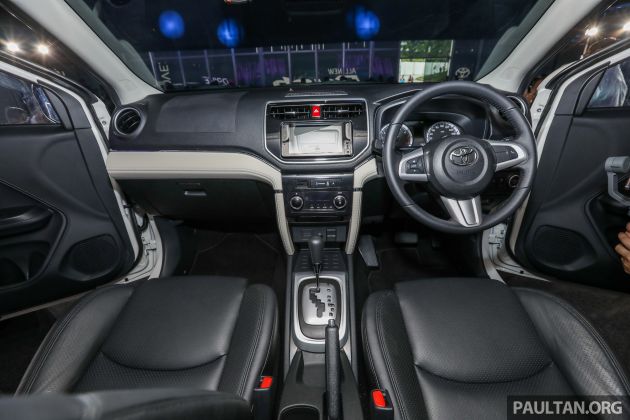Is the Perodua Aruz a rebadged Toyota Rush? That’s the common perception – perhaps because the Rush surfaced earlier here and Toyota is the senior brand – but not the most accurate description of the sister cars.
Both the Toyota Rush and Daihatsu Terios debut in Indonesia in late 2017, and as usual for that market, both cars are twins wearing different badges. It’s also convention that the Daihatsu is positioned lower than the Toyota, with slightly altered styling and a lower entry price. The Daihatsu Ayla-Toyota Agya and Daihatsu Sigra–Toyota Calya are the other examples.
What many don’t realise is that Daihatsu – wholly-owned by Toyota, of course – takes the lead in many of these projects and manufactures the cars for both brands in Indonesia. That’s the case with the Rush-Terios there, although only the Toyota-badged car will be exported to other emerging markets.
In Malaysia, both the Toyota Rush and Perodua Aruz are made by Perodua in Rawang, with all engines and transmissions coming from the same factories in Sendayan, Negeri Sembilan.
Also, they’re not 100% similar to the Indonesian duo – the Aruz benefits from suspension tuning that’s more suited to Malaysian preferences, which is a fair bit firmer than what Indonesians like. The Malaysian Rush also gets this P2-developed tuning – both are mechanically similar.
In any case, it’s OK to share with family, and Toyota owns Daihatsu, which is of course Perodua’s long-time technical partner. Family affairs aside, both the Malaysian-spec Rush and Perodua Aruz have design and equipment differences, which we’ll detail here.
Design
We still don’t have full images of the Perodua Aruz, but we’ve seen just about enough to draw conclusions. The main difference between the Rush and Aruz is in front.


The bonnet with two prominent humps are similar, as are the general shape of the LED headlamps and grille. That makes it clear that both cars are related, but the details set both apart.
The Perodua grille has one extra slat (five vs four, including top border) and the third bar acts as the signature “wings” to the Perodua badge. Neatly, the full chrome bar (it’s thicker than the other slats) bridges the LED daytime running lights with the same thickness.
Now that we’re there, upon closer inspection, the DRLs aren’t the same as Toyota’s – here, it’s a double dash versus the single stroke of the Rush, which points upwards into the body.
We see hints that the lower bumper is a unique Perodua item, too. There are faint “whiskers” on the space between the headlamps and lower intakes; this is not present on the Rush, which comes with chunky lower body add-ons in Malaysia. The P2 SUV’s face is also different from that of the Indonesian market Daihatsu Terios, which is closer to the Rush in appearance. The Terios’ grille is very heavy on chrome and has the same slat count as the Rush (four).

The rear end of both cars are similar, featuring wrap-around tail lamp clusters that cut deep into the hatch, and closely spaced double strip LED signatures. The lights are joined by a “double bridge”. The top portion – which holds the emblem – is in gloss black, and it’s “supported” by a chrome lower section.
We can’t see the lower bumper clearly here, but the Aruz won’t feature the Rush’s chunky lower body add-ons, branded “R-Blade Design” by UMW Toyota. Lastly, both Rush and Aruz wear 17-inch two-tone alloys, but in different designs.
Interior
We can’t show it to you yet, but having seen the Aruz in the metal, we can reveal that Perodua’s SUV does not share a dashboard with the Rush – Perodua has designed its own upper dash panel. The reasoning behind this was that the Rush’s interior was deemed too “simple” in design, and Malaysians generally like things to look busier, something mentioned by Perodua chief designer Muhamad Zamuren in a recent interview with paultan.org.
The “more complicated” look is provided by some layering on the IP, which results in a more prominent “V-shape” or waterfall to the fascia. The original look is more of a “T”, as seen in the Malaysian Rush and Indo-market Rush/Terios. To match the dash, the door cards of the Aruz are also of a unique design. We’d say that based on its objectives, P2’s modded dash is a success. On its own, the design is conventional and inoffensive.
The meter panel is shared, but the air con control panel is different – the Rush gets two knobs and an automatic function, while the Aruz’s AC panel is shared with the Myvi, two memory settings included.
Zooming into trim, the Aruz plays it safe with an all-black interior, with piano black trim and silver contrasts for the Advance spec (think Myvi AV). Meanwhile, the Rush’s cabin gets some beige pieces on the lower section for contrast; the Toyota also gets the now-familiar faux stitch pattern on the dash and doors.
Equipment
Both the Aruz and Rush are mechanically identical, and powered by the 2NR engine used the Myvi, Vios and Avanza. The Dual VVT-i four-pot channels power to the rear wheels via a four-speed automatic transmission. Toyota quotes 105 PS at 6,000 rpm and 136 Nm of torque at 4,200 rpm for the Rush.



With Eco Idle auto start-stop (as found in the Bezza and Myvi), P2 is claiming fuel economy of 15.6 km/l, identical to Toyota’s claimed FC figure. The Honda BR-V also uses a 1.5 litre engine, but paired with a CVT automatic.
The difference in equipment levels isn’t very big, although the Rush does offer some extra kit in return for the RM20k premium. The exclusive-to-Rush items are automatic air con (Aruz counters with memory), blind spot monitor and the Panoramic View Monitor with four cameras. The latter is a 360-degree bird’s eye view camera that assists parking, integrated into Toyota’s own head unit. By the way, Perodua’s improved Advanced Safety Assist (ASA) 2.0 is identical to the Rush’s Pre-Collision System.
Once again, the Perodua Aruz goes for RM72,200 for the X and RM77,200 for the Advance. Launched in October last year, the Toyota Rush is priced from RM93,000 to RM98,000 (est).
Source: Read Full Article






